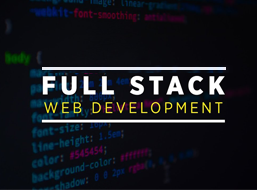Table of contents
| 1. What is the Key Feature of Generative AI? |
|
2. Applications of Generative AI
|
|
3. Generative AI Roadmap | Your Path to Mastery
|
|
4. How to Get Started in Generative AI?
|
| 5. Conclusion |
The rise of Generative AI Applications is redefining industries, from creating hyper-realistic digital art to drafting legal contracts in seconds. These systems don’t just analyze data; they generate original content—text, images, code, even 3D models—with human-like creativity.
What makes this field explosive? Adaptability. Whether it’s automating marketing copy for e-commerce or accelerating drug discovery in biotech, generative AI tailors solutions across domains. For professionals, this spells opportunity: LinkedIn ranks AI specialists among the fastest-growing jobs, with demand surging 40% annually, according to 2023 data.
But breaking in requires more than hype. You’ll need:
1. Technical chops (Python, transformer models)
2. Domain focus (pick healthcare, finance, etc.)
3. Credibility (like a Generative AI Certification)
This guide explores high-impact Applications of Generative AI. These skills matter, and how to future-proof your career, whether through self-learning or a structured Generative AI Course in Bangalore.
What is the Key Feature of Generative AI?
It creates. Unlike traditional AI, which predicts or classifies, generative AI produces new content—text, images, and even music—from learned patterns. Use ChatGPT for drafting emails or Stable Diffusion for generating logos. The magic lies in its training:
Learns from data, models digest billions of samples (e.g., books, paintings) to mimic styles. Also, they adapt—fine-tune GPT for legal docs or medical reports. Diffusion models refine noise into art. Also, LLMs like Claude rewrite drafts until perfection.
This “generation” ability unlocks niche uses, like synthetic data for rare diseases in healthcare.
Applications of Generative AI
Generative AI isn’t just a lab experiment—it’s solving real-world problems today. From automating workflows to sparking creativity, its applications are as diverse as they are transformative.
1. Enterprise Efficiency
Drafting contracts, generating reports, or creating synthetic training data for fraud detection—generative AI cuts manual work. Also, tools like Jasper.ai streamline marketing content at scale.
2. Creative Industries
Artists use MidJourney for concept art, while musicians leverage AI like Amper for composing. Even Hollywood leans on AI for script ideation and VFX pre-visualization.
3. Technical Acceleration
GitHub Copilot suggests code snippets, shaving hours off development. Also, AI models now debug errors or auto-generate test cases—pushing DevOps into hyperdrive.
4. Healthcare Breakthroughs
From designing protein structures for drug discovery to generating synthetic MRI scans for rare diseases, AI is becoming a lab partner.
Each use case proves one thing: generative AI isn’t replacing humans—it’s amplifying what they can achieve.
Generative AI Roadmap | Your Path to Mastery
Breaking into generative AI requires strategy, not just theory. Here’s how to build expertise that aligns with industry demands
1. Master the Fundamentals
Start with Python and either PyTorch or TensorFlow. Also, dive into transformer architectures (like GPT and Diffusion models)—they power most generative tools today.
2. Hands-On Experimentation
Fine-tune open-source models on Kaggle. Also, build small projects, such as a meme generator, a poetry bot, or a logo designer.
3. Specialize for Impact
Pick a domain. For healthcare, explore synthetic data generation. For gaming, try NPC dialogue systems. Also, tools like Hugging Face make model deployment easier.
4. Validate with Credentials
A Generative AI Certification (like Google’s or NVIDIA’s) proves your skills. Also, contribute to GitHub—recruiters love tangible work.
This roadmap isn’t linear. Iterate, niche down, and stay updated—research papers (arXiv) and AI newsletters are gold.
How to Get Started in Generative AI?
Breaking into generative AI is easier than you think—if you take the right approach. Here’s how to begin your journey:
Step 1 | Learn by Doing
Start experimenting immediately. Use free tools like Google Colab to run models. Also, explore platforms like Hugging Face Spaces to deploy your first AI demo.
Step 2 | Build a Portfolio
Create 3-4 quality projects. For example:
-
A text-to-image generator using Stable Diffusion
-
An AI chatbot fine-tuned on niche data
Also, document your process on GitHub or a blog.
Step 3 | Join the Community
Participate in AI challenges on Kaggle. Also, engage in Discord groups and Twitter/X discussions—the AI community shares breakthroughs daily.
Step 4 | Stay Updated
Follow key researchers (like Yann LeCun) and read papers on arXiv. Also, subscribe to newsletters like The Batch by DeepLearning.AI.
The field moves fast—consistent hands-on practice beats passive learning every time.
Conclusion:
Generative AI isn't just the future—it's transforming industries today. From creating art to accelerating drug discovery, generative AI applications are redefining what's possible.
For those in India's tech hub, consider a Generative AI Course in Bangalore to gain structured, hands-on training from industry experts. Whether through formal education or pursuing a Generative AI Certification, the opportunity is here. The field rewards those who experiment, specialize, and build upon existing knowledge.
Your next step? Pick one project and start creating. The AI revolution waits for no one—will you lead or follow?





